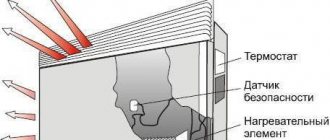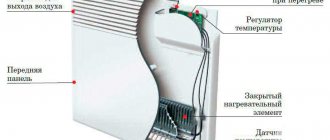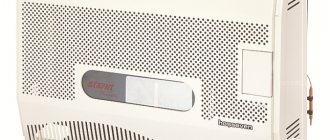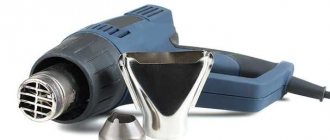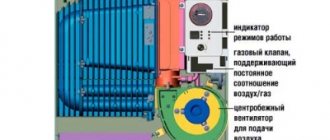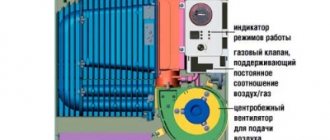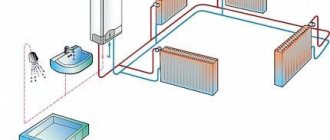You are undergoing renovation, and you have decided that you will install an in-floor convector, but many questions immediately arise: where, which one, with or without a fan. Indoor floor heating convectors are a specific product, there are many nuances that would be a good idea to study before making a purchase. We will try to help you choose the right device. To do this, we have compiled a list of questions that the designer needs to answer for correct calculations.
What you need to know to choose the right convector
Room area
Panoramic window length
Convector depth to the floor
Convector floor width
Is a fan needed or not?
Convector in the bedroom
Convector control
Wet or dry room
I don't want a fan! What to do?
Additional heating
Additional heating
Specialists can also talk about additional heating. What is meant? -warm floors, warm walls, someone leaves some of the heating devices and wants to install a convector only to prevent fogging of the continuous glazing. Maybe the windows overlook a loggia or balcony, this also needs to be indicated.
If you decide to combine, for example, leave one battery or install a water or electric heated floor, then you need a less powerful convector, which will allow you to save on its cost and the complexity of laying communications.
Convectors and laminate
Also, the installation of these heating devices is a gross violation of laminate laying technology.
Laminate, to the surprise of some, is not always of high quality. And even among premium brands there are defective batches.
For example, the decorative coating peels off and bends upward.
If he is married, you have the right to call an expert. And not from the supplier, but directly from the manufacturer.
He will check everything, and if the batch is truly defective, they must replace it with a new one free of charge.
And if you installed an in-floor convector, then you can immediately forget about warranty claims.
The expert will come, look at this matter, turn around, and, happy that they don’t have to change anything, go back.
Laminate is a “free-floating” flooring, and by installing such a heater in the floor, you do not give it the opportunity to expand in all directions.
Also, do not forget that laminate not only expands, but sometimes also contracts. Very often it shrinks so much that it no longer even covers the baseboard, which previously covered it by 1.5 cm.
And the decorative sides of the convector are only 5mm wide.
Therefore, in every second apartment, there are either wide gaps around the installation box, or the box is compressed and tightly clamps the decorative grille.
Management in what cases is it necessary?
When choosing convectors with additional convection, you always need a thermostat and a transformer (current converter). Convectors with natural convection can be controlled mechanically, for example by a thermal head (5 speeds).
Basic Installation Recommendations
The installation process of a floor convector is quite simple. It is described in detail in the manufacturer's instructions. The equipment is installed on the floor by embedding or mounting on special legs-stands supplied in the kit. It is intended for use in enclosed spaces.
During installation, it is recommended to observe the following rules:
- mount the device in a strictly horizontal position, controlling this with an ordinary building level;
- carefully fix the equipment;
- make sure that the heat exchanger is located on the side farthest from the window (except for the case when the main mission of the convector is to create a protective heat shield along the windows);
- place the device at a distance of 20-25 cm from the floor covering;
- connect the heat exchanger to distribution pipes supplying the coolant, flexible hoses with a stainless steel coating or metal braided hoses.
- do not allow deformation of the gutter edges.
First of all, the floor surface is marked. Then the legs of the equipment or holders are fixed with special fasteners. After this, the housing is installed and the convector is connected to the water supply system.
Particular care should be taken when installing threaded connections. It is very important not to damage the threads or break the tightness of the clutches. It is best to use a torque wrench in your work, which will allow you not to exceed the tightening torque.
When installing the convector, you must follow the manufacturer's recommendations and connect the pipeline correctly. Installation errors can lead to insufficient efficiency and frequent breakdowns of the device.
Unlike devices with floor and wall mounting, floor convectors are distinguished by the simplest installation technique. But still, if you have insufficient skills and little experience in handling heating equipment, it is advisable to entrust the installation to a professional technician.
I don't want a fan! What to do?
Very often clients want a floor convector, but do not want a convector with a fan. For the life of me, they don’t want to, because of the noise, electricity and other things. Then you can try replacing the solution with convectors without a fan, but with increased power. Namely a convector with two heat exchangers. Such convectors produce thermal power 50-70% more than standard ones. with one heat exchanger.
The disadvantage of this solution is its width, usually 350-420 mm. Designers are very afraid of such decisions, since it does not fit into their interior. Another disadvantage is that such a convector is almost as expensive as a convector with a fan.
When you are just deciding what kind of heating system to install in your apartment or house, you can easily fall for advertising from marketers and store managers who will describe in colorful terms all the advantages of this type of heating as in-floor convectors.
This article will discuss in detail all their shortcomings, which are usually modestly kept silent in all stores and on manufacturers’ websites.
Firstly, trench convectors are not compatible with central heating. And it doesn’t matter what connection diagram you have:
- single-pipe
- or two-pipe
You will not achieve normal operation with any of them. This is due to the fact that inlet and outlet pipes are laid along intricate and complex routes.
And in all these joints, turns and elbows, increased hydraulic resistance occurs.
Hot water does not want to follow a complex path with many joints and narrowings. It is much easier for her to bypass the convector and directly slip into another room or through the wall to your neighbors. That is, where normal radiators are installed and normal resistance is created.
As a result, your convectors remain cold. Of course, you can use a trick and, with a single-pipe system, plug the bypass.
This will ensure a forced supply of hot water. However, everything you achieve will be similar to the effect of installing a water floor.
It will be hot in your apartment, and all your closest neighbors will be sweltering.
Accordingly, expect complaints to all authorities. Next, commission checks. Instructions that at your own expense, within 3 days, you need to restore the normal circuit and operation of the central heating system.
And if you make a preliminary calculation and select the right material (section and diameter of plastic pipes, slide-on fittings), will the convector work in this case? Yes, it will.
However, not all models will heat normally, but only the most powerful of them, and even those that have a separate fan in their design.
But even in this case, the installation and installation of in-floor convectors, from the point of view of legislation, still falls under the same rules as the installation of water heated floors.
In addition, if you connect from the risers and go with pipes under the screed, the risers will still remain.
And you will have to get out in two ways:
- cover them with flooring
- erect a false wall
Therefore, the main thing you must remember is that if you have a standard heating system, then you should immediately forget about in-floor convectors .
Now let's consider a situation where in your apartment the collector wiring and heating are done on the floor.
Firstly, do not take the word of sales managers. Absolutely all in-floor convectors heat very poorly. And the shallower the depth of their installation, the worse they do it.
In fact, in central Russia, only the most powerful models with an installation depth of 120 mm work normally. And only if they have an additional fan.
From such work you will get foggy windows, and the temperature in the room will not exceed 17 degrees.
Sometimes there is even mold on the walls and ceiling.
Screed thickness and floor level
If your screed thickness throughout the apartment is approximately 5 cm, then to install an in-floor convector, you will have to add as much as 7 cm on top.
And this is approximately 3 bags of mixture per 1 m2. Or 320 bags for an apartment of 100 m2.
As a result, you will receive neither more nor less - 13 tons of screed. A regular Gazelle contains approximately 1.5 tons.
And bringing almost 10 Gazelle screeds into your apartment just to install an in-floor convector is not a very smart decision.
In addition, do not forget that the floor level at the entrance to the apartment and the floor level at the entrance should be approximately the same level. That is, upon entering your home, you should not fall into a hole and should not climb a step.
This means that in approximately 70% of apartments, you simply cannot pour the required amount of screed to install the 120th box.
What to look for when choosing a trench convector
If you decide to use a floor convector as a heat source, then you first need to determine what the heat losses of the room are, which will allow you to calculate the power of the equipment. At the next stage, you must decide how deep the niche in the floor will be. It is necessary to focus on the design features of the devices described, the depth of which can vary from 50 to 540 millimeters. It is necessary to calculate the permissible overall dimensions of the device, namely the width and length, which will be suitable for the specific room where the unit is supposed to be installed
If you want to buy an in-floor convector, then experts recommend paying attention to models that are equipped with a transformer and an electronic thermostat; a model with a fan will be able to heat the room as quickly and efficiently as possible, preventing the windows from freezing and fogging up
conclusions
Summarizing all of the above, I would like to draw the attention of readers to the need for the correct selection of floor convectors. And it will be correct only if the appropriate calculations have been carried out and the actual conditions of its operation have been taken into account. Thus, we reach the real thermal power of the device and design features that ensure stable operation of the system. Most of the same readers do not resort to the help of designers, but they can also choose a convector that theoretically meets average operating conditions. The result in this case depends on the accuracy of compliance with all the recommendations given above and the requirements of the manufacturer of the specific equipment.
Principle of operation
The filling of a floor heating convector is a system that includes a heat exchanger in the form of an aluminum or copper pipe. Metal plates are attached to it on all sides. The more there are, the better. In contact with the hot pipe, the plates increase the area that transfers heat to the room. Due to their structure, they seem to “pass” the surrounding air through themselves and then evenly distribute the warm flow.
Some modern convectors have special adjustable blinds, with which you can direct the heat in the desired direction.
In addition, there are convectors of more complex design, equipped with additional functions:
- forced air ventilation;
- adjusting the temperature using a thermostatic valve;
- automatic release of air through a special valve.
Improved models are more convenient to use and allow you to heat the room faster at the same water temperature in the pipes. Floor-mounted water heating convectors with a fan operate almost silently. Sound level no more than 23 decibels.
Floor heating radiators built into the floor are connected to the heating system according to the same principle as conventional radiators; for this you can use corrugated tubes. Installation is simple, and you can do it very quickly, even yourself, if you have experience working with conventional radiators.
Sometimes one convector has two or even three heat exchangers, in which case the heat transfer will be many times greater.


